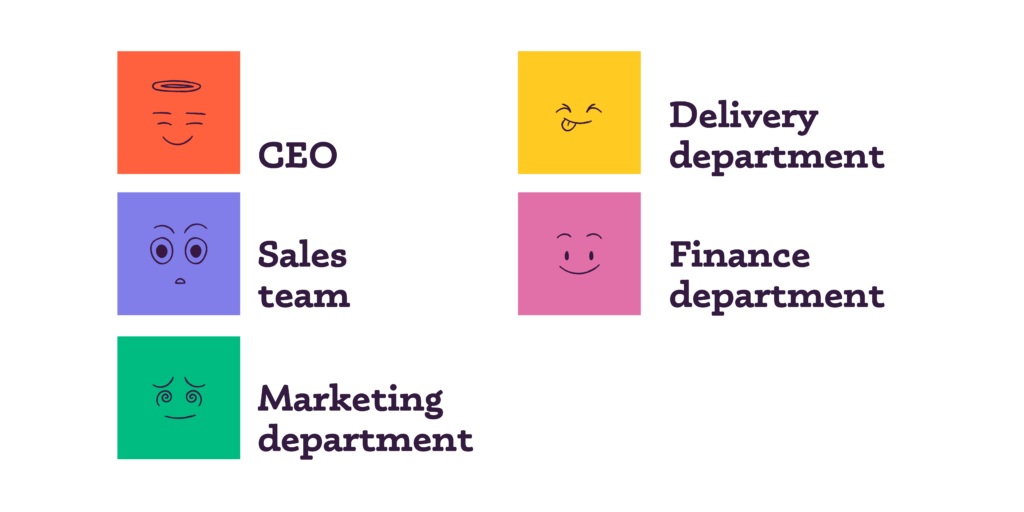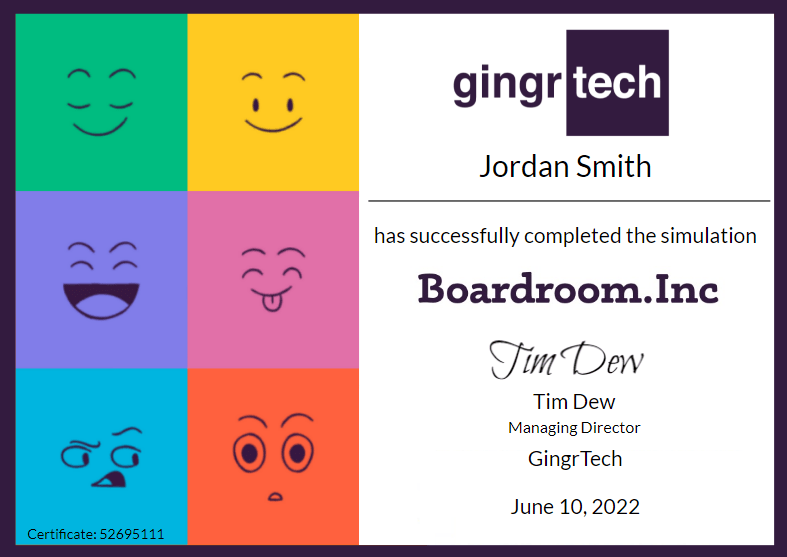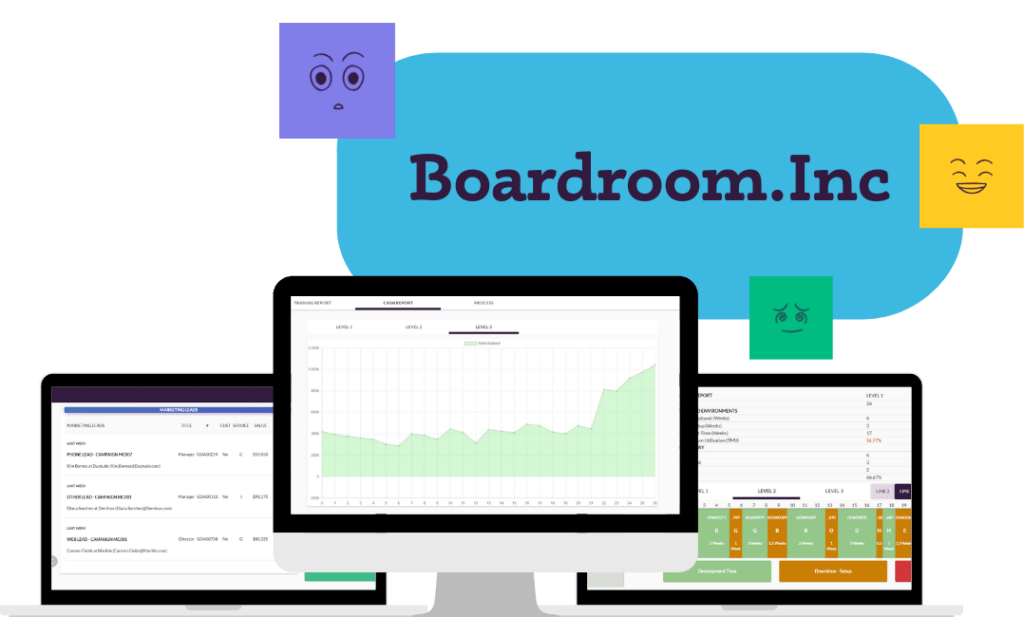Agenda

There are three phases to a Boardroom.Inc implementation:
Needs analysis
– Needs analysis: interview with the stakeholder to establish the following: strategic priorities, overarching performance of the team, individual strengths and weaknesses, alignment of team with the strategy, and performance against the strategy.
– Identification and prioritization of key outcomes: to ensure that the maximum value is created from implementation, it is essential to understand the objectives of the program of work from three different points of view: organization, team level and individual objectives.
– Planning the implementation of Boardroom.Inc, preparing a list of attendees, agenda for the board, and the set-up of the session, both virtual or classroom.
Gameplay
Based on the needs analysis, the facilitation of the gameplay is adapted to meet the needs of the program of work. Innovation and ideas created are captured.
After each round, teams reflect to improve their performance in future rounds. Innovations and improvements are captured by the facilitator.
Real-world mapping
After a session, the facilitator will work with the team to take the captured learnings and map them to their own workplace functions. As a final step, these are translated into specific actions for immediate implementation.
– Review: capture innovations and learnings.
– Map: apply innovations to real-life problems.
– Action: specific focused changes for immediate application.
Summary
Boardroom.Inc is designed for groups of up to 15 people, online or in-room, and divided into three rounds. Each round is 26 minutes and involves the equivalent of 26 weeks of trade.
Teams are tasked with running and optimizing a complete business in only a few short hours. However, teams are given a business that is struggling and under-developed processes without a rule book to improve it. The objective is to build a successful organization that expands, has improved processes, and is profitable and fully agile in its marketplace.
26 weeks in 26 minutes
We challenge teams to develop the strategies to deliver organizational success in only a few short hours.
Each round is 26 minutes and involves the equivalent of 26 weeks of trade, making the gameplay fun yet nerve-racking.
Our experience has proved that all players start finding the simulation difficult and confusing, whilst improving round after round by coming up with their own ideas and systems to improve the business. Whilst most, if not all, teams fail to succeed in round one, they exponentially improve as the rounds progress. The game allows teams to try and fail in a safe environment.
Game roles
Teams are split into different departments and roles. Depending on their own role, they may be asked to play a different role in the simulation.

How it works
Experiential learning
Practice makes perfect
Experiential learning is the most successful method of driving organizational change, improving thinking skills and creating lasting connections.
The recreation of real-world business scenarios allows users to learn by doing and results in a higher player engagement and emotional involvement.
Accreditation

Certifications will be sent to all players to be able to demonstrate their learnings and contribute to their personal and professional development.



